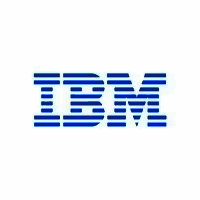Description

Citrix Hypervisor

IBM Turbonomic
Comprehensive Overview: Citrix Hypervisor vs IBM Turbonomic
Citrix Hypervisor
a) Primary Functions and Target Markets:
Primary Functions:
- Virtualization: Citrix Hypervisor (formerly XenServer) is primarily focused on virtualization, enabling organizations to run multiple virtual machines (VMs) on a single physical server. This helps in optimizing resource usage and reducing hardware costs.
- Cloud Integration: It integrates with cloud services and facilitates the deployment and management of workloads in a cloud environment.
- Management and Orchestration: Offers centralized management tools and automation features to streamline VM deployment, monitoring, and management.
- High Availability and Disaster Recovery: Provides features to ensure business continuity and data safety, including high availability, live migration, and built-in backup and recovery solutions.
Target Markets:
- Small to Large Enterprises: Organizations looking to reduce IT costs while increasing server utilization.
- IT Infrastructure Services: Firms requiring robust virtualization platforms for data centers and cloud environments.
- Industries with Specific Compliance Needs: Such as healthcare, finance, where reliability and data protection are crucial.
b) Market Share and User Base:
Citrix Hypervisor is a well-established player in the virtualization market, but it faces stiff competition from larger players like VMware and Microsoft Hyper-V. While it has a loyal customer base, its overall market share is smaller compared to its main competitors. Its strengths lie in its integration capabilities with Citrix’s ecosystem of cloud and application delivery products.
c) Key Differentiating Factors:
- Integration with Citrix Ecosystem: Seamless integration with other Citrix products provides an all-in-one solution for organizations using Citrix virtual apps and desktops.
- Open-Source Roots: Based on the open-source Xen Project, which can be appealing for organizations that value open-source technologies.
- Cost-Effectiveness: Often seen as a cost-effective alternative to some of the larger virtualization solutions, especially for existing Citrix customers.
IBM Turbonomic
a) Primary Functions and Target Markets:
Primary Functions:
- Application Resource Management (ARM): IBM Turbonomic focuses on ensuring that applications get the resources they need to perform optimally in real-time by automatically adjusting resources in virtual, cloud, and container environments.
- Performance Optimization: Continuously analyzes application performance to identify and resolve bottlenecks, latency issues, and resource wastage.
- Cost Management: Optimizes resource usage to reduce unnecessary expenditures, making it a crucial tool for cost-conscious enterprises.
- Infrastructure Automation: Automates decision-making processes regarding resource allocation to maintain optimal application performance.
Target Markets:
- Enterprises and Service Providers: Large organizations and cloud service providers looking to optimize resource utilization and manage hybrid cloud environments efficiently.
- Industries with Dynamic Workloads: Such as financial services, healthcare, and e-commerce, where performance optimization and scalability are critical.
- DevOps Teams: Organizations utilizing containerized applications and microservices.
b) Market Share and User Base:
IBM Turbonomic has a strong presence in the application resource management space, known for its advanced automation and optimization capabilities. Its user base includes enterprises that prioritize performance and efficiency in their IT operations. While not the largest player in the broader IT management market, it has a significant foothold in niches requiring precise application performance management.
c) Key Differentiating Factors:
- Real-Time Resource Optimization: Focuses on real-time optimization of application resources rather than just virtual machines.
- AI and Automation: Leverages AI-driven operations to automate the management of resources, which reduces the need for manual intervention.
- Cross-Environment Capabilities: Works seamlessly across virtual, on-premises, and cloud environments, making it suitable for hybrid and multi-cloud strategies.
Comparison Overview
- Focus: Citrix Hypervisor is a virtualization platform with strong integration into the Citrix ecosystem and a foundation on open-source technology. IBM Turbonomic is an application resource management tool that prioritizes real-time performance optimization using AI.
- Target Market: Citrix appeals more to organizations invested in the Citrix ecosystem and looking for virtualization solutions, whereas IBM Turbonomic is tailored for companies managing complex environments needing automated and intelligent resource management.
- Deployment and Integration: While both serve enterprise markets, Citrix offers a broader range of virtualization solutions, whereas IBM Turbonomic excels with its AI-driven optimization across diverse environments.
Overall, the choice between the two products depends heavily on an organization's specific needs: whether they prioritize virtualization and integration within existing Citrix products, or require intelligent, real-time performance management of their application environments.
Contact Info

Year founded :
Not Available
Not Available
Not Available
Not Available
Not Available

Year founded :
2010
+1 844-438-8872
Not Available
United States
http://www.linkedin.com/company/turbonomic
Feature Similarity Breakdown: Citrix Hypervisor, IBM Turbonomic
When comparing Citrix Hypervisor and IBM Turbonomic, they are both tools used for managing IT environments, particularly in virtualization and optimization of resources, but they serve different purposes and cater to somewhat different audiences. Here's a breakdown of their features:
a) Core Features in Common
-
Virtualization Management: Both platforms provide solutions for managing virtual environments. Citrix Hypervisor is a hypervisor platform that facilitates the creation, hosting, and management of virtual machines, whereas IBM Turbonomic optimizes and monitors these environments.
-
Resource Optimization: They both focus on optimizing the use of physical and virtual resources. IBM Turbonomic offers advanced AI-driven resource management to ensure applications have the resources they need, and Citrix offers features for resource pooling and distribution.
-
Scalability: Both products allow for scaling the virtual environments. Citrix Hypervisor supports a range of scalability features like dynamic memory control, while IBM Turbonomic supports scalable architecture across multiple infrastructures, including cloud and on-premises.
-
Performance Monitoring: They provide monitoring capabilities to maintain and enhance performance. While Citrix Hypervisor includes basic monitoring tools for VMs, IBM Turbonomic offers in-depth analytics and reporting related to performance, with a focus on ensuring optimal application performance.
b) User Interface Comparison
-
Citrix Hypervisor UI: Typically utilizes XenCenter, which is a Windows-based management tool with a straightforward and relatively simple interface. However, it can seem technical and requires a learning curve for complete mastery. It focuses more on the management of individual virtual machines and hardware resources.
-
IBM Turbonomic UI: Has a more modern and visually appealing interface with dashboards that emphasize data visualization and analysis. It is designed to be intuitive with a focus on automation suggestions and decision-making processes for optimizing resources. Turbonomic's UI is tailored to give a clear business context to IT resource management, which can be more user-friendly and visually informative.
c) Unique Features
-
Citrix Hypervisor:
- Integration with Citrix Virtual Apps and Desktops: Citrix Hypervisor integrates seamlessly with other Citrix products, which is advantageous for users already embedded in the Citrix ecosystem.
- Direct Inspect APIs: Security-based APIs allowing third-party vendors to provide advanced threat detection without the need for invasive scanning.
- Virtual GPU Support: Advanced support for GPU virtualization which is beneficial for graphic-intensive applications and workloads.
-
IBM Turbonomic:
- AI-Powered Resource Management: Uses AI-driven analytics to recommend actions automatically to achieve optimal application performance.
- Application Resource Management: Focuses not only on the infrastructure but aligns IT supply with application demand, ensuring that each application has the resources it needs.
- Integration with Various Environments: Offers integration with a variety of cloud and on-prem services, providing a unified solution for hybrid cloud management beyond just virtualization.
In conclusion, while Citrix Hypervisor is more focused on virtualization and managing VMs directly, IBM Turbonomic offers a broader solution for optimizing and managing resources across a wide range of environments with an emphasis on application performance and AI-driven automation.
Features

Not Available

Not Available
Best Fit Use Cases: Citrix Hypervisor, IBM Turbonomic
Certainly! Let’s delve into the best-fit use cases for Citrix Hypervisor and IBM Turbonomic, as well as how they cater to different industry verticals or company sizes.
Citrix Hypervisor
a) Types of businesses or projects for Citrix Hypervisor:
-
Small to Medium-Sized Businesses (SMBs): Citrix Hypervisor is well-suited for SMBs looking for a cost-effective virtualization platform that offers strong performance and flexibility. Its open-source base can be particularly appealing to businesses that need an agile, customizable solution without the licensing costs associated with some other hypervisor solutions.
-
Enterprise Environments with Citrix Integration Needs: It’s ideal for enterprises already heavily invested in Citrix environments, as it offers seamless integration with Citrix Virtual Apps and Desktops. This creates a cohesive ecosystem, maximizing the efficiency and performance of virtualized workloads.
-
Cloud Service Providers: Companies providing cloud services can leverage Citrix Hypervisor for its efficiency in managing multi-tenant environments. Its scalability and support for mixed workloads make it a reliable choice for service providers who need to deliver consistent performance.
-
Disaster Recovery and High Availability Projects: Citrix Hypervisor supports advanced features like live migration and high availability, making it a good choice for projects where minimizing downtime is critical.
IBM Turbonomic
b) Scenarios where IBM Turbonomic would be preferred:
-
Complex, Multi-Cloud Environments: Turbonomic excels in optimizing resource utilization across hybrid and multi-cloud environments. It helps organizations dynamically allocate resources to meet application performance demands, making it ideal for businesses with complex infrastructure.
-
Performance-Driven Enterprises: Organizations where application performance is critical, such as in e-commerce, finance, or real-time analytics, can benefit from Turbonomic's ability to assure performance while maintaining compliance with business and operational policies.
-
Enterprises Focused on Cost Optimization: Companies aiming to optimize their infrastructure costs without compromising on application performance will find the real-time insights and automation capabilities of Turbonomic particularly useful. It helps manage costs by suggesting or automatically taking actions that maximize efficiency.
-
DevOps and Agile Environments: In environments with agile methodologies and DevOps practices, where rapid deployment and performance tuning are needed, Turbonomic’s real-time analytics and automated optimization can significantly accelerate performance tuning and capacity planning.
Catering to Different Industry Verticals or Company Sizes:
-
Industry Verticals: Both Citrix Hypervisor and IBM Turbonomic cater to several industry verticals, but with slightly different angles. Citrix Hypervisor is frequently seen in verticals with stringent security requirements or integration needs with virtual desktop infrastructure, such as healthcare, finance, and education. IBM Turbonomic is favored in sectors prioritizing robust application performance and resource optimization, such as retail, telecommunications, and banking, where dynamic and complex environments are common.
-
Company Sizes: Citrix Hypervisor tends to be a better fit for small to medium enterprises that need virtualization solutions without high licensing fees and those looking for integration within Citrix ecosystems. In contrast, IBM Turbonomic suits larger enterprises with complex, multi-cloud deployments and a strong focus on optimizing both operational performance and costs. Its advanced automation features are more aligned with larger environments requiring strategic resource management.
In summary, Citrix Hypervisor is advantageous for firms needing a reliable, cost-effective virtualization platform, especially if they are already using Citrix products. IBM Turbonomic is ideal for enterprises needing deep insights and automation for resource optimization in highly complex and dynamic IT environments.
Pricing

Pricing Not Available

Pricing Not Available
Metrics History
Metrics History
Comparing teamSize across companies
Conclusion & Final Verdict: Citrix Hypervisor vs IBM Turbonomic
Conclusion and Final Verdict for Citrix Hypervisor vs. IBM Turbonomic
When comparing Citrix Hypervisor and IBM Turbonomic, it's important to note that these two products serve different primary functions. Citrix Hypervisor is a virtualization platform designed to allow multiple virtual machines to run on a single physical server, while IBM Turbonomic is a resource management tool that dynamically manages application performance through intelligent workload automation.
a) Best Overall Value
Given the distinct purposes these software solutions serve, the "best overall value" depends largely on specific user needs:
-
For Virtualization Needs: Citrix Hypervisor may offer the best value as a robust, cost-effective virtualization platform. It is particularly suitable for users seeking scalability, advanced networking features, and comprehensive virtualization solutions.
-
For Performance Management and Optimization: IBM Turbonomic offers the best value by ensuring optimal resource allocation, maximizing application performance, and enhancing efficiency through automated decision-making.
b) Pros and Cons
Citrix Hypervisor
- Pros:
- Cost-effective virtualization solution with support for a variety of workloads.
- Excellent scalability, enabling the hosting of multiple virtual machines efficiently.
- Advanced security features, such as high availability and disaster recovery.
- Strong community support and a wealth of resources for administrators.
- Cons:
- Less prominent in the enterprise market compared to other virtualization giants like VMware.
- Might require more extensive initial setup and configuration.
- The learning curve can be steep for those unfamiliar with Citrix products.
IBM Turbonomic
- Pros:
- Automates resource allocation to improve application performance and infrastructure efficiency.
- Provides real-time insights and analytics that help optimize IT operations.
- Simplifies performance management across hybrid cloud environments.
- Integrates well with a wide variety of platforms and applications.
- Cons:
- May be viewed as expensive for smaller organizations with limited budgets.
- Primarily functions for resource management, not a standalone virtualization solution.
- Some users might find the predictive analytics complex without sufficient technical expertise.
c) Recommendations
-
For Users Prioritizing Virtualization: If your primary need is a reliable and cost-efficient virtualization environment, Citrix Hypervisor should be your choice. It is well-suited for environments where managing virtual machine density and ensuring high availability are critical.
-
For Organizations Focused on Optimization and Performance Management: Choose IBM Turbonomic if your primary concern is enhancing application performance through automation and efficient resource management. It is particularly beneficial for businesses operating in hybrid cloud environments needing dynamic workload optimization.
-
Combined Approach: For enterprises that require both robust virtualization solutions and performance optimization, consider deploying both products. Citrix Hypervisor can be used to manage VMs, while IBM Turbonomic can optimize resource usage and ensure application performance.
By clearly understanding their respective roles and strengths, organizations can make informed decisions to meet their specific needs, ensuring a more efficient and effective IT environment.
Add to compare
Add similar companies



